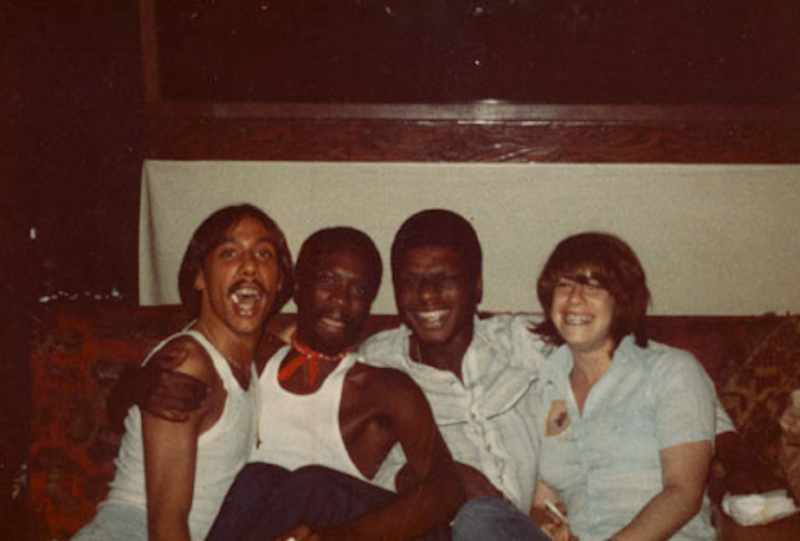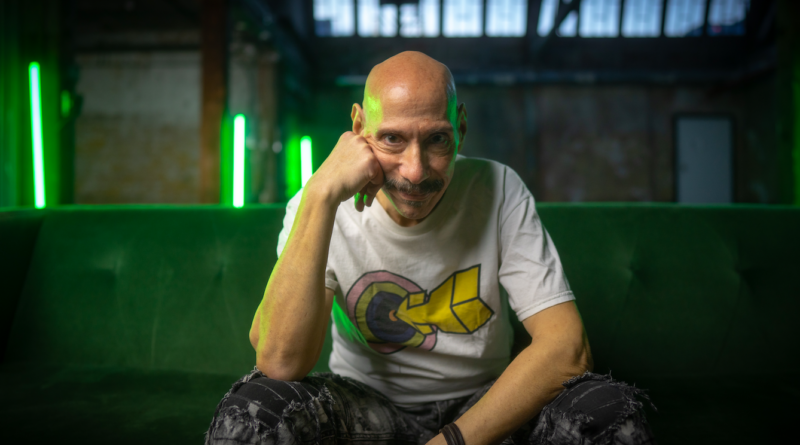INTERVIEW: ‘Disco’ stories from the influential DJ who spun those records
Photo: Nicky Siano, an influential DJ in the 1970s, is one of the subjects of Disco: Soundtrack of a Revolution on PBS. Photo courtesy fo PBS / Provided by press site with permission.
Nicky Siano had a front seat to a social revolution in the 1960s and 1970s. As a young person in New York City, someone who would made frequent trips to Greenwich Village, he was tapped into the music scene of the day, first embracing the folk rock of Crosby, Stills & Nash and then falling in love with the songs of Lauren Nyro, who penned tunes for the likes of Barbra Streisand and the 5th Dimension.
But then the 1970s hit, and Siano as a young teenager found himself outside the Stonewall Inn in the Village, listening to the new dance music of the times and wondering how can a beat be so infectious. This led him into a career of DJ’ing, including at Studio 54, and owning his own club, the legendary Gallery in New York City. Now Siano’s story is part of the new PBS documentary series called Disco: Soundtrack of a Revolution, which premieres Tuesday, June 18, at 9 p.m.
“I’m really kind of a stay-in-the-now kind of person,” Siano said in a recent phone interview. “I don’t live in the past. I’ve just been asked many, many times to relay my part of the story, especially since all those people who were around me have passed, and so I’m the last man standing from the ‘70 to ‘75 period. There were other DJs still around who played during that period, but … I don’t think there’s any doubt that David Mancuso and I really were the most influential DJs and club owners because we owned our own spaces and made it even more influential in the early ‘70s.”
Mancuso is also one of the voices in Disco, along with Francis Grasso and Earl Young. There are also scenes about the influential bands and artists, like Gloria Gaynor, the Bee Gees, Donna Summer, Candi Staton and Thelma Houston. Even the Rolling Stones make an appearance with their hit tune “Miss You.”
“I mean, everything that came from all the big clubs that were designed were a direct offshoot of either David’s club or my club,” Siano said. “Steve Rubell was a good friend of mine before he opened Studio [54]. I played for him at Enchanted Gardens, and he came to the Gallery every Saturday night and hung out under my booth. We had a three-tier lighting system, and the lights looked like they were going up into the ceiling. And then he opens a club where the lights went up into the ceiling. It wasn’t a far stretch. My friends talk about it all the time: ‘Did you see that at Studio? It looks just like the Gallery when the balloons came down. That’s the same thing, isn’t it?’ It’s not just me. Whoever was there pretty much points it out.”
Siano has two older brothers, nine and 10 years older than him, and they provided him with his earliest musical influences. The Beatles and folk music were on in the house in the 1960s. He has vivid memories of liking Joni Mitchell, Neil Young and Nyro when was a child.
“Then I started going down to the Village when I was 13, and then a year later, there were the Stonewall Riots,” he said. “I didn’t go to the Stonewall. I was just going down to the Village as a 14-year-old who was looking for an alternative lifestyle, and all of a sudden I walk out of the West 4th Street train station. And there are heads everywhere, and they’re blocking Sixth Avenue. I’m like, ‘What the hell is going on here?’ I said to my friend, ‘What is going on?’ Someone turned around and said, ‘It’s a protest,’ and I immediately thought it was a protest for the Vietnam War because that was happening.”
The Vietnam War is in the backdrop of the new Disco series, as are many of the social movements of the day. The Stonewall Riots kickstarted the gay rights movement, which happened simultaneous to the continued call for civil rights, women’s rights and peace around the world.
“What I love about [the documentary] is it’s couched in the serious issues that were happening of the time and how the music rose,” Siano said. “There’s no doubt that the whole dance music scene rose out of the ashes of Stonewall. Lambda Legal Defense Fund opened the Firehouse, which was a major club of the early ‘70s, to pay for people’s legal defense. I believe it rose out of those ashes and out of all the unrest at the time. … I started hanging out every Friday and Saturday night down at the Village. We would hang out across the street from the Stonewall. Marsha P. Johnson, she was one of the big influences of the time. She has a statue in Sheridan Square park, her and Sylvia Rivera, who really were instrumental in inciting the riot that night. She was just like a den mom. All the kids would just hang out with her, and across the street was Stonewall. And every time the door would open, I would hear this new music. I’m saying, ‘What the hell is that song?’ So I started hanging out right outside. I couldn’t get in, 14 years old, going on 15, and I immediately became extremely involved with this type of music.”
Siano added: “I was like, this is my kind of music. I knew Lauren Nyro, and I loved her and all this. … But all of that just washed away when I heard my first dance record. I was lucky enough to go to the Loft when I was just 15 years old, and that was it. I said, ‘No, this music is it.’ It wasn’t called disco. It was called R&B, gospel, rock ‘n’ roll and anything that was danceable. … So the word disco wasn’t coming up yet. I just was into dance music.”
By John Soltes / Publisher / John@HollywoodSoapbox.com
Disco: Soundtrack of a Revolution, featuring Nicky Siano and others, premieres Tuesday, June 18, at 9 p.m. on PBS. Click here for more information.


